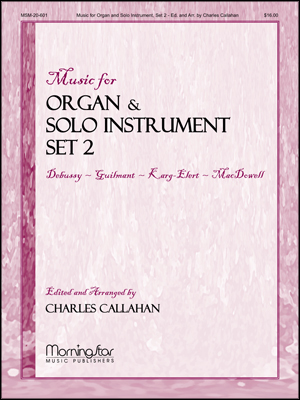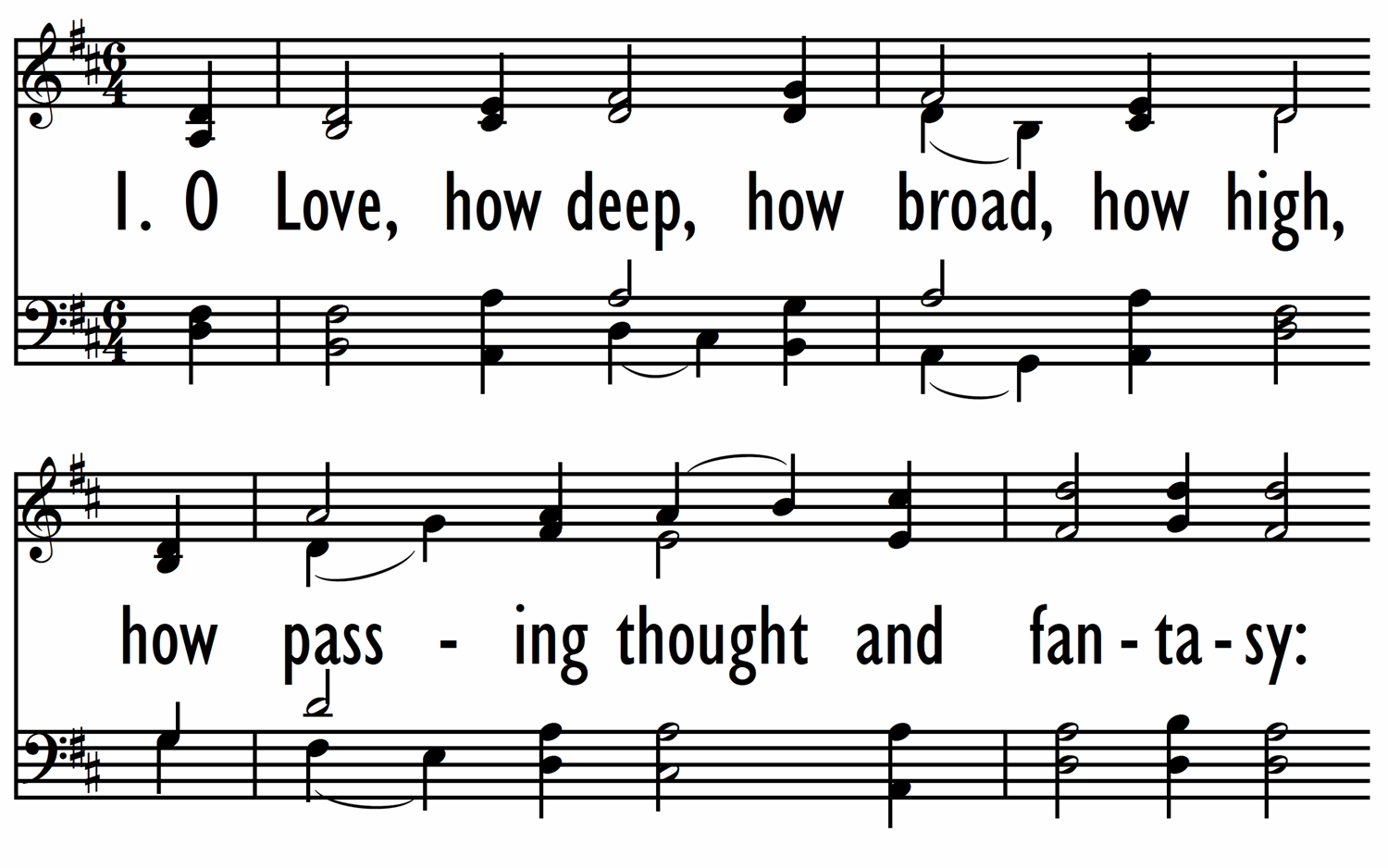Scripture References:
st. 1 = Eph. 3:18-19, Phil. 2:7
st. 2 = Matt. 3:13, Matt. 4:1-11
st. 3 = John 17:9
st. 4 = Rom 4:25, 1 Pet. 2:24
st. 5 = Rom. 8:34, John 16:7, 13
The original anonymous text in Latin ("O amor quam ecstaticus") comes from a fifteenth-century manuscript from Karlsruhe. The twenty-three-stanza text has been attributed to Thomas à Kempis because of its similarities to writings of the Moderna Devotio Movement associated with à Kempis. (that movement was an important precursor of the Reformation in the Netherlands). However, there is insufficient proof that he actually wrote this text.
Benjamin Webb (b. London, England, 1819; d. Marylebone, London, 1885) translated the text in eight stanzas. It was published in The Hymnal Noted (1852), produced by his friend John Mason Neale (PHH 342). Webb received his education at Trinity College, Cambridge, England, and became a priest in the Church of England in 1843. Among the parishes he served was St. Andrews, Wells Street, London, where he worked from 1862 to 1881. Webb's years there coincided with the service of the talented choir director and organist Joseph Barnby (PHH 438), and the church became known for its excellent music program. Webb edited The Ecclesiologist, a periodical of the Cambridge Ecclesiological Society (1842-1868). A composer of anthems, Webb also wrote hymns and hymn translations and served as one of the editors of The Hymnary (1872).
The text has a wide scope, taking in all of Jesus’ incarnate life: his birth (st. 1); identification with human affairs (st. 2); daily ministry (st. 3); crucifixion (st. 4); resurrection, ascension, and gift of the Spirit (st. 5); the final stanza is a doxology (st. 6). Thus the text summarizes Christ's life in the same manner as the Apostles' Creed. A striking feature is the text's emphasis on the fact that Jesus accomplished all of this "for us"; "for us" occurs at least a dozen times! The redemptive work of Christ is very personally, very corporately applied.
Liturgical Use:
Epiphany, especially later in the season; Lent, Holy Week, Easter, Ascension, and at many other times; the final stanza makes a good doxology for Epiphany, Lent, or the Easter season.
--Psalter Hymnal Handbook
Hymnary Pro Subscribers
Access
an additional article
on the Canterbury Dictionary of Hymnology:
Hymnary Pro subscribers have full access to the Canterbury Dictionary of Hymnology.
Get Hymnary Pro


 My Starred Hymns
My Starred Hymns








